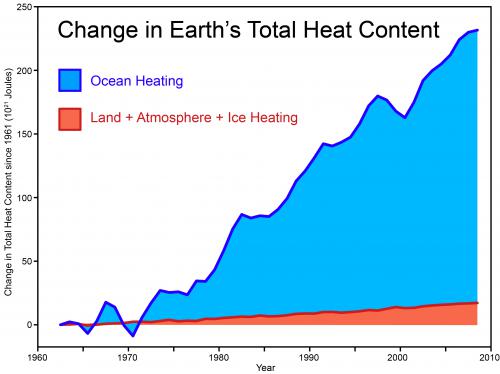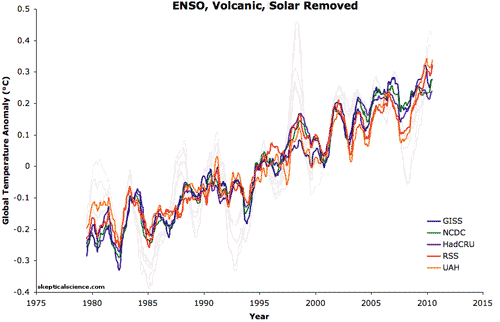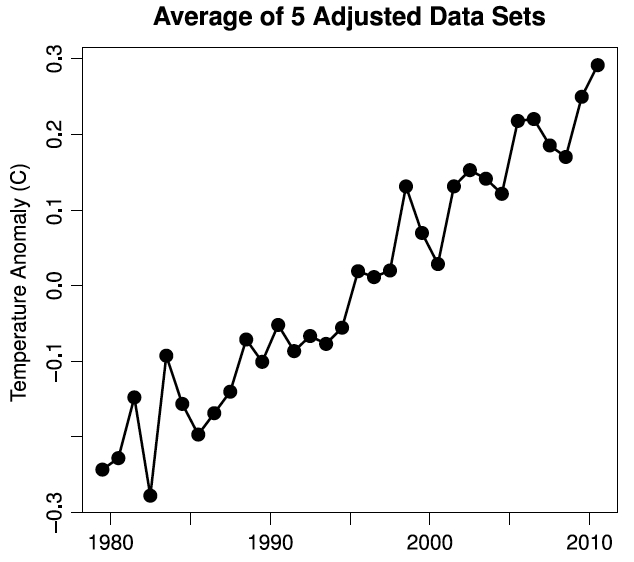 Arguments
Arguments
 Software
Software
 Resources
Comments
Resources
Comments
 The Consensus Project
The Consensus Project
 Translations
Translations
 About
Support
About
Support


Latest Posts
- Skeptical Science New Research for Week #14 2025
- Two-part webinar about the scientific consensus on human-caused global warming
- Sabin 33 #22 - How does waste from wind turbines compare to waste from fossil fuel use?
- Clean energy generates major economic benefits, especially in red states
- 2025 SkS Weekly Climate Change & Global Warming News Roundup #13
- Skeptical Science New Research for Week #13 2025
- Climate skeptics have new favorite graph; it shows the opposite of what they claim
- Sabin 33 #21 - How does production of wind turbine components compare with burning fossil fuels?
- China will need 10,000GW of wind and solar by 2060
- 2025 SkS Weekly Climate Change & Global Warming News Roundup #12
- Skeptical Science New Research for Week #12 2025
- Climate Fresk - a neat way to make the complexity of climate change less puzzling
- Sabin 33 #20 - Is offshore wind development harmful to whales and other marine life?
- Do Americans really want urban sprawl?
- 2025 SkS Weekly Climate Change & Global Warming News Roundup #11
- Fact brief - Is waste heat from industrial activity the reason the planet is warming?
- Skeptical Science New Research for Week #11 2025
- Visualizing daily global temperatures
- Sabin 33 #19 - Are wind turbines a major threat to wildlife?
- The National Hurricane Center set an all-time record for forecast accuracy in 2024
- 2025 SkS Weekly Climate Change & Global Warming News Roundup #10
- Fact brief - Is Greenland losing land ice?
- The Cranky Uncle game can now be played in 16 languages!
- Skeptical Science New Research for Week #10 2025
- Climate Adam: Protecting our Planet from President Trump
- Sabin 33 #18 - Can shadow flicker from wind turbines trigger seizures in people with epilepsy?
- Cuts to U.S. weather and climate research could put public safety at risk
- 2025 SkS Weekly Climate Change & Global Warming News Roundup #09
- Fact brief - Are high CO2 levels harmless because they also occurred in the past?
- Skeptical Science New Research for Week #9 2025
Archived Rebuttal
This is the archived Intermediate rebuttal to the climate myth "It's cooling". Click here to view the latest rebuttal.
What the science says...
|
Empirical measurements of the Earth's heat content show the planet is still accumulating heat and global warming is still happening. Surface temperatures can show short-term cooling when heat is exchanged between the atmosphere and the ocean, whic |
To say we're currently experiencing global cooling overlooks one simple physical reality - the land and atmosphere are only one small fraction of the Earth's climate (albeit the part we inhabit). Global warming is by definition global. The entire planet is accumulating heat due to an energy imbalance. The atmosphere is warming. Oceans are accumulating energy. Land absorbs energy and ice absorbs heat to melt. To get the full picture on global warming, you need to view the Earth's entire heat content.
Church et al 2011 extends the analysis of Murphy 2009 which calculated the Earth's total heat content through to 2003. This new research combines measurements of ocean heat, land and atmosphere warming and ice melting to find that our climate system continued to accumulate heat through to 2008.

Figure 1: Total amount of heat from global warming that has accumulated in Earth's climate system from 1962 to 2008, from Church et al. (2011). Also see this graphic that shows the ocean heating in two layers, 0-700 meters and 700-2000 meters deep.
A look at the Earth's total heat content clearly shows global warming has continued past 1998. So why do surface temperature records show 1998 as the hottest year on record? Figure 1 shows the heat capacity of the land and atmosphere are small compared to the ocean (the tiny brown sliver of "land + atmosphere" also includes the heat absorbed to melt ice). Hence, relatively small exchanges of heat between the atmosphere and ocean can cause significant changes in surface temperature.
In 1998, an abnormally strong El Nino caused heat transfer from the Pacific Ocean to the atmosphere. Consequently, we experienced above-average surface temperatures. Conversely, the last few years have seen moderate La Nina conditions which had a cooling effect on global temperatures. And the last few months have swung back to warmer El Nino conditions. This has coincided with the warmest June-August sea surface temperatures on record. This internal variation where heat is shuffled around our climate is the reason why surface temperature is such a noisy signal.
Figure 1 also underscores just how much global warming the planet is experiencing. Since 1970, the Earth's heat content has been rising at a rate of 6 x 1021 Joules per year. In more meaningful terms, the planet has been accumulating energy at a rate of 190,260 gigawatts. Considering a typical nuclear power plant has an output of 1 gigawatt, imagine 190,000 nuclear power plants pouring their energy output directly into our oceans. Our climate is still accumulating heat. Global warming is still happening.
Moreover, even if we focus exclusively on surface and lower atmosphere temperatures, the warming continues. Foster and Rahmstorf (2011) used multiple linear regression to filter out the effects of the El Niño Southern Oscillation (ENSO), and solar and volcanic activity (Figure 2), and found that the underlying global surface and lower atmosphere warming trends have remained very steady in recent years (Figure 3).
Figure 2: Five datasets of global surface temperature and lower troposphere temperature are shown before and after removing the short-term effects of the El Niño Southern Oscillation (ENSO), solar variability, and volcanic aerosols. A 12-month running average was applied to each dataset.
Figure 3: Average of all five data sets (GISS, NCDC, HadCRU, UAH, and RSS) with the effects of ENSO, solar irradiance, and volcanic emissions removed (Foster and Rahmstorf 2011)
intermediate rebuttal written by LarryM
Update July 2015:
Here is a related lecture-video from Denial101x - Making Sense of Climate Science Denial
Updated on 2015-07-05 by pattimer.
THE ESCALATOR

(free to republish)


























































